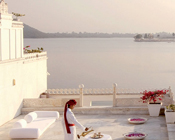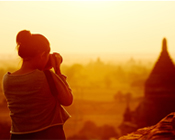Indonesia
Population & Culture
Indonesia is a country with a culture virtually as impressive as the number of its population of over 240 million inhabitants. This diversity is partly explained by the fact that the country is not uniform but comprises several islands, that each have their own history and communities. Today, the dominant religion in the archipelago is Islam, whose presence has been attested in the 13th century by Marco Polo, but Christianity and Buddhism and Hinduism are also vivid, though much less numerous. Even with their minority religions status, they both have been very influential regarding the architecture of temples and palaces, as well as for the sculpture field.
The language is another form of diversity. Although the Indonesian Bahasa (close to the Malay) is considered the only official language, Javanese and Sundanese are also common in their respective regions, as well as hundreds of other dialects, mostly of Austronesian origin. There are nearly 300 Indonesian ethnic groups. The majority of residents are from a crossbreeding between old local tribes and the Chinese, Indians and Arabs.
The Indonesian culture is mostly reflected in the arts. The most popular of the Indonesian arts is wayang theatre, playing with puppets shadows, and of which the only puppeteer is called the Dalang. The performances of wayang are always accompanied by music. In most cases, a widely popular orchestra composed of percussion instruments and called gamelan is used. Dances are also part of theater performances. In Bali and Java, traditional dances can have a religious function, as well as ceremonial. Also, the Balinese pendet or Javanese bedhaya have a spiritual function, while the Balinese legong or Javanese serimpi have a ceremonial role. In Java, four schools of court dances stand out: the Kraton of Surakarta, the Kraton of Yogyakarta, the Puro Mangkunegaran (princely court of Surakarta) and Puro Pakualaman (court of Yogyakarta).
Traditional Indonesian textiles include the ikat (woven fabrics with designs originating from Nusa Tenggara, but common throughout the archipelago), the songket (silk interwoven with gold and silver threads), the Lampung carpet or the famous Javanese batik, made of wax and dye patterns printed on fabric. The Indonesian pottery is raw and naive in Lombok, influenced by Chinese ceramics in the Singkawang region, marked by the West and glazed in Bali. The Toraja people are specialist of pearl jewelry, while the Dayaks and Lombok put together cowries, small shells of great value, in delicate artifacts.
Wood carving is also widespread in Indonesia. The original purpose of these sculptures was to protect homes against evil spirits. In Java, a traditional couple of wooden figures, the loro blonyo, is during weddings set aside from the bride and the groom to draw upon them the evil spirits, or at the door of a house to welcome visitors. In Nias, Sumba, in the Toraja country and in the Ngaju and Dusun villages of Borneo, wooden statues representing ancestors still take a huge part in religious life. In Bali and Java in particular, the ornate furniture is highly developed, especially teak (jati). Finallly, carved wooden masks are frequently used in community rituals or in theater.

 1 (866) 722-0909
1 (866) 722-0909
 QUOTE REQUEST
QUOTE REQUEST 





































